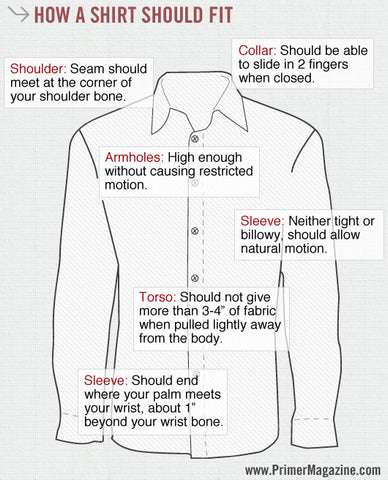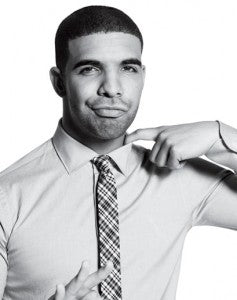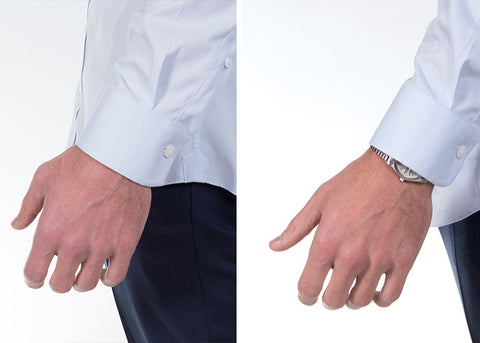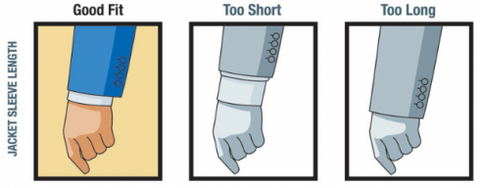We’ve all been in that uncomfortable situation at one point or another. Unless you were born with style aka Chuck Norris, and you arrived at fashion. Not the other way around.
That uncomfortable feeling of not being able to discern if a dress shirt has that elusive, perfect fit. Is it too short or too long? Does it seem to snug, bordering on tight, or is it downright baggy and ludicrous? When we are at work, or a formal event, we all most definitely want to put our best foot forward (take a cue, Sir Charles Barkley).
So with that being said, let’s take a look at how a Dress Shirt Should Fit. Let’s start at the top and work our way down:

The Perfect Collar fit touches the skin all the way around the neck without pressing against it. A reliable litmus test for the right collar is to try and place two fingers between your collar and your neck. If you can comfortably slip your two fingers between your neck and collar without forcing the issue, you have the right collar!
Without stating the obvious, a collar is too tight if it constricts you. A discernable sense of constriction would also mean that the litmus test would be a lot harder to pass – no fingers between your neck and collar!
A Dress Shirt Collar is considered loose if it is rest off your body as opposed to against it. In such an instance, you would be able to place both your fingers between your neck and collar without moving the fabric at all!

Dress Shirt Shoulder
The correct dress shirt shoulder fit should be appropriately on the edge of your shoulder, where your shoulder meets your arm.
A Dress Shirt is considered too tight if the shoulder seam is sitting closer to your neck, causing wrinkling in the shirt sleeve. Conversely, a dress shirt is considered too loose if the seam is placed below where your shoulder meets your arm.

Dress Shirt Torso
An appropriate Dress Shirt Torso fit consists of the buttons closing comfortably, without constricting the torso. The dress shirt should tuck in neatly without glaring excess fabric hanging from the sides.
A Dress Shirt that is too tight will consist of buttons that are strained to close, causing wrinkles around the buttonholes and around the fabric area in the torso region. If a dress shirt is too large, there will be excess fabric hanging out when the shirt has been tucked in.

Dress Shirt Sleeves
An appropriate Dress Shirt sleeve is slightly wider at the upper arm than the cuff, with the sleeve tapering gradually on the way down from the upper arm to the cuff. The fabric should be slightly loose when the arm hangs straight.
If the dress shirt sleeve is too tight, one will feel tightness against the elbow and see clear wrinkling from the shoulder seam downwards. Conversely, a dress shirt sleeve that is too loose will result in excess fabric hanging throughout the sleeve, ending with the cuff.

Dress Shirt Sleeve Cuff
A good litmus test for the dress shirt sleeve cuff is to ascertain if you can remove the shirt without unbuttoning the cuff. Just as with a collar, if a pair of fingers can be inserted between the cuff and your wrist, you’re in good shape! Additionally, room for a wrist watch indicates a well fitted shirt sleeve cuff.
A Dress shirt sleeve cuff is considered too tight if the buttons need to be undone when removing the shirt. The cuff will usually press against the skin all the way around.
A loose cuff is often indicated by a cuff that can slide around your wrist even with a watch being worn!

Dress Shirt Sleeve Length
An appropriate dress shirt sleeve length will bring your dress shirt sleeve down to where your wrist meets your hand. If a suit jacket is worn, approximately half an inch of shirt sleeve cuff should be exposed. If a wrist watch is worn, the cuff should at least touch the wrist watch.
The Dress Shirt Sleeve Length is considered too short if the wrist bone is completely exposed (i.e the shirt sleeve cuff is not touching one’s wrist at all).
The Shirt Sleeve Length is considered too long if it completely covers the wrist.

Dress Shirt Bottom Hem Length
When a dress shirt is untucked, it should fall far enough to cover the belt. The shirt should be long enough at all points to tuck in at least an inch into your trousers.
If the dress shirt is too short, it will not completely cover your belt. Conversely, a dress shirt is considered too long if it covers your crotch in the front or bottom at the back. When tucked in, excess fabric will have to be shoved in between your legs to prevent bunching up!
And that’s a wrap for this one. What one or two elements of dress shirt fit do you consider absolutely critical? We would love to hear your comments below!
Check out our extensive range of Ties, Pocket Squares & Lapel Flowers at The Dark Knot! Our unique filtered search system allows you to find ties based on matching shirts, matching suits and even the type of occasion / setting that you are looking to wear ties for!


